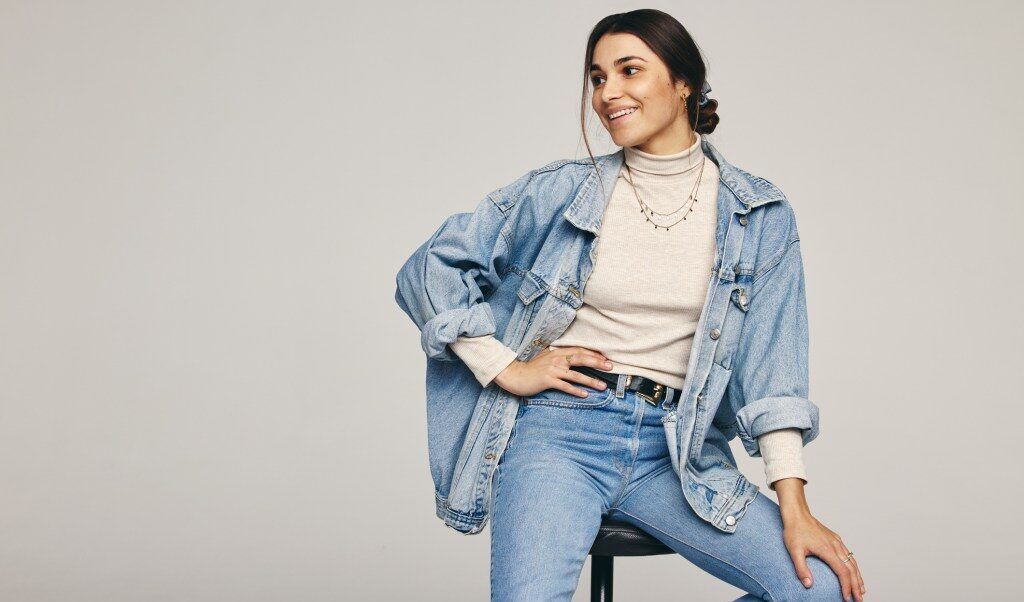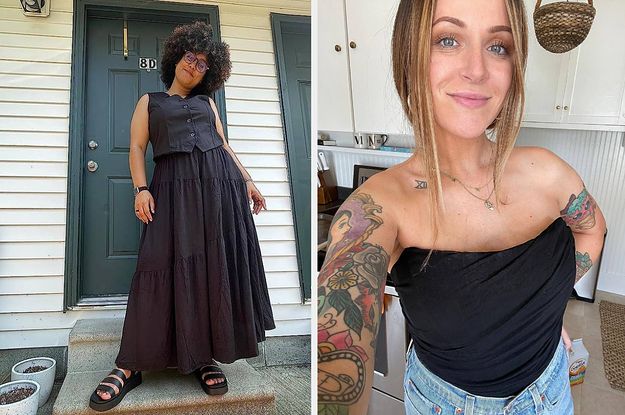The Spring/Summer 2024 fashion weeks have wrapped and two things are clear: designers are doing incredible things with denim, and athleisure is being reinvented.
First, the denim. From New York Men’s Day designers Sebastien Ami, whose unisex menswear collection included multiple denim pieces, and Raleigh Denim Workshop, who showed everything from denim dresses and dusters to utility-style coveralls, to EckhausLatta, who showed denim skirts over blue jeans at New York Fashion Week, and Dries Van Noten, who sent an elegant denim evening jacket down the Paris Fashion Week catwalk, denim surfaced over and over again in runway shows and presentations.
“Acknowledging its commercial appeal, designers continued to build their denim offerings this season, with the fabric ubiquitous across the big four,” says Edited’s Aoife Byrne, senior analyst, in an interview with Lifestyle Monitor™. “Longline denim coats that really lean into noughties nostalgia were a hero piece on this season’s runways, used to refresh the classic trench coat at Private Policy and Dries Van Noten. And existing trends like cargo jeans and denim maxi skirts were seen citywide and will remain key buys for the coming season.”
The Talent Unlimited Group’s Carl Ayers, brand strategist and fashion/lifestyle editor, says denim is more than just a trend for next spring.
“It’s a staple,” Ayers says in an interview with Lifestyle Monitor™. “While many designers don’t always start out using denim in their collections, they often eventually incorporate it because it’s a more accessible and familiar entry for the consumer. So, I don’t see denim as a trend, per se, for SS24, just as I don’t see the LBD (little black dress) as a trend for SS24. They’re both central to fashion.”
The global denim jeans market alone is expected to reach $95 billion by 2030, up from $64.5 billion in 2022, according to Statista.
This makes sense as the majority of consumers (82 percent) say they plan to purchase the same amoung (62 percent) or more (20 percent) pairs of denim in the next 12 months compared to last year, according to the 2023 Cotton Incorporated Lifestyle Monitor™ Survey. Shoppers say they plan to buy more jeans because they need new denim bottoms (27 percent), they have a change in clothing size (11 percent), they want new/changing styles (9 percent), and they are wearing jeans more (7 percent).

Brands and retailers should be prepared for the majority of this upcoming denim shopping to happen in-store. Most shoppers (52 percent) plan to buy all of their new jeans in physical locations, according to the Monitor™ research. Another 24 percent plan to buy most in-store and maybe a few online. And 11 percent plan to purchase half online, half in-store. Finally, 9 percent plan to buy most of their jeans online and a few in-store. Just 5 percent plan to buy all their jeans online.
To Ayers’ point about denim being a staple, U.S. consumers wear denim on average three days a week, according to the Monitor™ research, and that goes across all age groups, from 13 to 70.
So, what kind of styles can consumers expect next season? For starters, Byrne says to look for throwback washes and finishes.
“Acid and indigo surfaced as essential washes for the SS24 season, playing into ‘80s and ‘00s aesthetics, respectively,” Byrne says. “For the former, purple, gray and light blue were fundamental colorways, with a grungy undertone. Distressed denim bubbled up as a micro trend, noted at brands like Diesel, Stella McCartney and Phillip Plein. And in jeans, we saw designers play up Gen Z’s favored silhouette: low-rise, baggy fits. Mid, vintage blue washes were most prominent for this shape, with some, like Versace, adding embellishment for newness.”
Ayers says some brands put a significant emphasis on their denim offerings.
“I didn’t see any Texas tuxedoes on the runway, but we saw denim incorporated into the silhouette trends of the season,” Ayers asserts. “The fabric was used to create everything from bags, shoes and overcoats for Dries Van Noten and interlaced garments for Stella McCartney to distressed pants for Pressiat.
Of course, spring is about some other cotton trends, one of them being streetwear and athleisure looks.
“With the return of minimalism and the rise of Blokette, we’re seeing a gradual return to core fabrics like jersey and cotton,” Byrne says. “While we’re nowhere near the levels of athleisure we’ve seen in the past, there’s been a definite shift on the runways for Spring 2024. Streetwear-inspired hoodies (both in top and dress form) and basics like tanks, henleys and polo shirts received serious airtime this season, playing into sporty and streetwear aesthetics.”
The increase in cotton for these styles meshes with U.S. consumer preferences, as it is the preferred fiber for T-shirts (79 percent), pajamas (72 percent), casual shirts (61 percent), sweatpants (58 percent), and athletic shirts (53 percent), according to Cotton Incorporated’s 2023 Global Lifestyle Monitor™ Survey.
Overall, the majority of U.S. consumers say cotton is the most comfortable fabric (74 percent), the softest (73 percent), the most authentic (70 percent), the most sustainable (66 percent), the highest quality (63 percent), and the most versatile (59 percent), according to the 2023 Global Lifestyle Monitor™ Survey.
Ayers says he sees athleisure being as much a part of the average wardrobe as denim. And despite the increasing popularity of utility/workwear styles, he doesn’t see that supplanting athleisure.
“I see them coexisting just as they’ve done in the past,” Ayers says. “In the early ‘90s, there were the suburban and Valley kids dressed in sweats and tees, and there were urban kids dressed in Carhartt and Timberlands.”
Pointing to designer Nicole Benefield’s new Abercrombie & Fitch collaboration in partnership with Harlem’s Fashion Row—where something like a heavyweight cotton popover hoodie can easily be paired with a modern take on cargo pants (the cargo pockets are on the front of the leg instead of the side)—Ayers says workwear and athleisure will continue to update and remain relevant.
The Cotton Incorporated Lifestyle Monitor™ Survey is an ongoing research program that measures consumer attitudes and behaviors relating to apparel, shopping, fashion, sustainability, and more.
For more information about the Lifestyle Monitor™ Survey, please visit https://lifestylemonitor.cottoninc.com.




